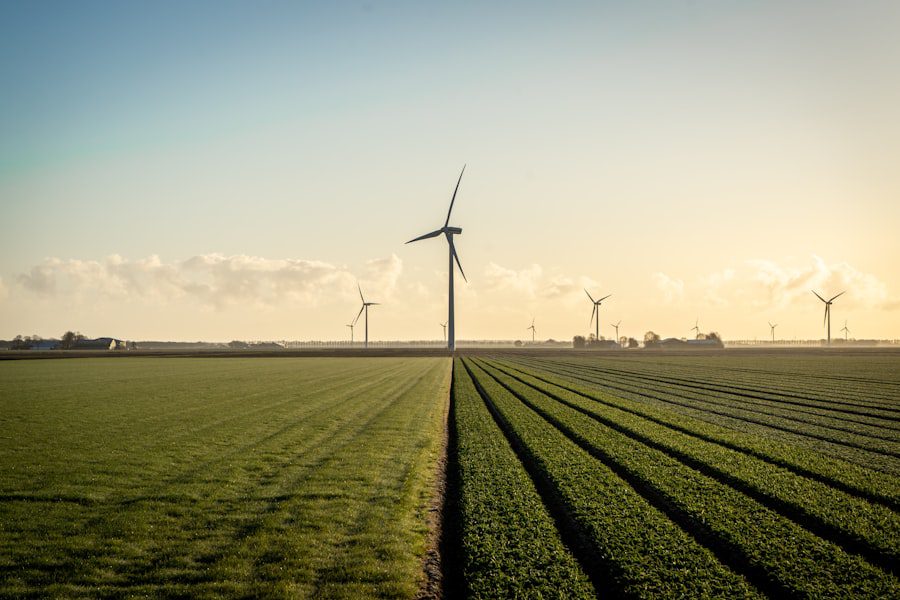Sustainable energy practices encompass the utilization of renewable energy sources and methods that minimize environmental impact. These include solar, wind, hydroelectric, and geothermal power, as well as energy efficiency measures. The primary objective is to reduce dependence on finite fossil fuels, which contribute to air and water pollution and climate change.
By adopting renewable energy sources, societies can decrease their carbon footprint and promote long-term environmental sustainability. Energy efficiency is a crucial component of sustainable energy practices, focusing on reducing energy consumption while maintaining or improving output. This is achieved through the implementation of energy-efficient technologies in appliances, lighting, and construction materials, as well as the adoption of energy-saving strategies in industrial processes and transportation.
Reducing energy consumption leads to lower greenhouse gas emissions and diminished environmental impact. The overarching goal of sustainable energy practices is to meet current energy needs without compromising the ability of future generations to meet their own requirements. This approach balances present demands with long-term environmental and resource conservation, promoting a more sustainable and resilient energy future.
Key Takeaways
- Sustainable energy practices focus on using renewable resources and reducing environmental impact
- Implementing sustainable energy can lead to cost savings, improved public health, and job creation
- Steps to implementing sustainable energy include conducting energy audits, investing in energy-efficient technologies, and promoting energy conservation
- Challenges in adopting sustainable energy include high initial costs, lack of awareness, and resistance to change
- Case studies show successful implementation of sustainable energy in various industries and communities
- Government policies play a crucial role in promoting sustainable energy through incentives, regulations, and funding
- The future of sustainable energy practices looks promising with advancements in technology and increasing global awareness of environmental issues
The Benefits of Implementing Sustainable Energy
Environmental Benefits
One of the most significant benefits is the reduction of greenhouse gas emissions, which contribute to climate change. By utilizing renewable energy sources such as solar and wind power, we can significantly lower our carbon footprint and mitigate the effects of global warming. This can lead to cleaner air and water, as well as a healthier environment for all living beings.
Economic Advantages
In addition to environmental benefits, implementing sustainable energy practices can also lead to economic advantages. The renewable energy industry has the potential to create numerous jobs in manufacturing, installation, and maintenance of renewable energy systems. Furthermore, investing in sustainable energy can reduce our reliance on imported fossil fuels, leading to greater energy security and stability.
A More Resilient Economy
By diversifying our energy sources, we can also reduce the volatility of energy prices and create a more stable energy market. Overall, implementing sustainable energy practices can lead to a more resilient and prosperous economy.
Steps to Implementing Sustainable Energy Practices

Implementing sustainable energy practices requires a multi-faceted approach that involves various stakeholders and strategies. One of the first steps is to conduct a comprehensive assessment of current energy usage and identify areas where sustainable practices can be implemented. This may involve conducting an energy audit to identify opportunities for energy efficiency improvements, as well as evaluating the feasibility of integrating renewable energy sources into the existing energy infrastructure.
Once potential opportunities have been identified, the next step is to develop a comprehensive plan for implementing sustainable energy practices. This may involve setting specific goals and targets for reducing energy consumption and increasing the use of renewable energy sources. It may also involve securing funding and resources for implementing sustainable energy projects, as well as engaging with stakeholders and building public support for sustainable energy initiatives.
After a plan has been developed, the next step is to implement sustainable energy practices through a combination of policies, regulations, and incentives. This may involve enacting policies that promote renewable energy development, such as feed-in tariffs or renewable portfolio standards. It may also involve providing financial incentives for businesses and individuals to invest in renewable energy systems, such as tax credits or rebates.
Overall, implementing sustainable energy practices requires a coordinated effort that involves collaboration between government, businesses, and communities.
Overcoming Challenges in Adopting Sustainable Energy
| Challenges | Metrics |
|---|---|
| Cost | Initial investment, payback period |
| Technology | Efficiency, reliability, scalability |
| Regulatory | Policies, permits, compliance |
| Public Awareness | Education, outreach, engagement |
| Infrastructure | Grid integration, storage, distribution |
While there are numerous benefits to implementing sustainable energy practices, there are also challenges that must be overcome in order to successfully transition to a more sustainable energy system. One of the main challenges is the upfront cost of implementing renewable energy systems and energy efficiency measures. While the long-term savings from reduced energy costs can be significant, the initial investment required to install solar panels or upgrade to energy-efficient appliances can be a barrier for many individuals and businesses.
Another challenge is the integration of renewable energy sources into the existing energy infrastructure. Unlike traditional fossil fuel power plants, renewable energy sources such as solar and wind power are intermittent and dependent on weather conditions. This can create challenges in maintaining a stable and reliable energy supply, particularly during periods of low renewable energy generation.
Additionally, there may be technical challenges in integrating renewable energy sources into the grid and ensuring compatibility with existing infrastructure. Furthermore, there may be regulatory and policy barriers that hinder the adoption of sustainable energy practices. This may include outdated regulations that favor traditional fossil fuel industries or lack of supportive policies for renewable energy development.
Overcoming these challenges requires a coordinated effort from government, businesses, and communities to address financial, technical, and regulatory barriers to sustainable energy adoption.
Case Studies of Successful Sustainable Energy Implementation
There are numerous examples of successful implementation of sustainable energy practices around the world that demonstrate the feasibility and benefits of transitioning to renewable energy sources. One notable example is Germany’s Energiewende initiative, which aims to transition the country’s energy system to one based on renewable energy sources. Through a combination of policies, incentives, and investments in renewable energy infrastructure, Germany has significantly increased its share of renewable energy in its electricity mix and reduced its reliance on fossil fuels.
Another example is Costa Rica, which has achieved nearly 100% renewable electricity generation through a combination of hydroelectric, geothermal, wind, and solar power. By investing in renewable energy infrastructure and promoting energy efficiency measures, Costa Rica has been able to reduce its carbon footprint and become a global leader in sustainable energy practices. In addition to national initiatives, there are also numerous examples of successful implementation of sustainable energy practices at the local level.
For example, cities such as Copenhagen and Vancouver have implemented ambitious plans to become carbon-neutral through investments in renewable energy infrastructure, public transportation, and building efficiency measures. These case studies demonstrate that with the right combination of policies, investments, and public support, it is possible to successfully transition to a more sustainable energy system.
The Role of Government Policies in Promoting Sustainable Energy

Renewable Portfolio Standards (RPS)
One crucial policy tool is the implementation of Renewable Portfolio Standards (RPS), which require utilities to generate a certain percentage of their electricity from renewable sources. RPS policies provide a market incentive for renewable energy development and help drive investment in renewable energy infrastructure.
Feed-in Tariffs (FITs)
Another important policy tool is Feed-in Tariffs (FITs), which provide financial incentives for individuals and businesses to generate their own renewable electricity and sell it back to the grid. FITs help make renewable energy more economically viable by providing a guaranteed payment for electricity generated from renewable sources. This encourages investment in distributed renewable energy systems such as rooftop solar panels and small wind turbines.
Supporting Research and Development
Government policies can also support research and development in sustainable energy technologies through funding for research institutions and incentives for private sector innovation. By investing in research and development, governments can help drive down the cost of renewable energy technologies and improve their efficiency and reliability. Overall, government policies play a crucial role in creating a supportive environment for sustainable energy development by providing incentives for renewable energy deployment, supporting research and development, and enacting regulations that promote clean energy technologies.
The Future of Sustainable Energy Practices
The future of sustainable energy practices looks promising as technological advancements continue to drive down the cost of renewable energy technologies and improve their efficiency and reliability. As the cost of solar panels, wind turbines, and battery storage continues to decline, renewable energy is becoming increasingly competitive with traditional fossil fuel sources. This trend is expected to continue in the coming years, making renewable energy an increasingly attractive option for meeting our growing energy needs.
Furthermore, there is growing public awareness and support for sustainable energy practices as people become more concerned about climate change and environmental degradation. This has led to increased demand for clean energy solutions from both individuals and businesses, driving further investment in renewable energy infrastructure. In addition to technological advancements and public support, government policies are also expected to play a crucial role in shaping the future of sustainable energy practices.
As countries around the world commit to reducing their carbon emissions under international agreements such as the Paris Agreement, there is increasing pressure on governments to enact policies that promote renewable energy development and reduce reliance on fossil fuels. Overall, the future of sustainable energy practices looks promising as technological advancements, public support, and government policies continue to drive investment in renewable energy infrastructure and promote a transition to a more sustainable energy system. By working together to overcome challenges and implement supportive policies, we can create a cleaner, more resilient, and prosperous future for generations to come.
If you’re interested in learning more about sustainable energy practices, you should check out this article on Kabul implementing energy efficiency regulations. The article discusses the steps the city is taking to improve its energy usage and reduce its environmental impact. It’s a great example of how communities can work towards a more sustainable future. You can read the full article here.
FAQs
What are sustainable energy practices?
Sustainable energy practices are methods of generating and using energy that minimize negative environmental impacts, conserve natural resources, and are economically viable in the long term.
What are some examples of sustainable energy practices?
Examples of sustainable energy practices include using renewable energy sources such as solar, wind, and hydro power, improving energy efficiency in buildings and transportation, and promoting energy conservation and responsible consumption.
Why are sustainable energy practices important?
Sustainable energy practices are important because they help reduce greenhouse gas emissions, mitigate climate change, and decrease reliance on finite fossil fuel resources. They also contribute to energy security and can create economic opportunities in the renewable energy sector.
How can individuals and businesses adopt sustainable energy practices?
Individuals and businesses can adopt sustainable energy practices by investing in renewable energy technologies, improving energy efficiency in their operations, and promoting sustainable energy policies and initiatives.
What are the benefits of sustainable energy practices?
The benefits of sustainable energy practices include reduced environmental impact, improved public health, energy cost savings, job creation in the renewable energy sector, and increased energy security and resilience.



